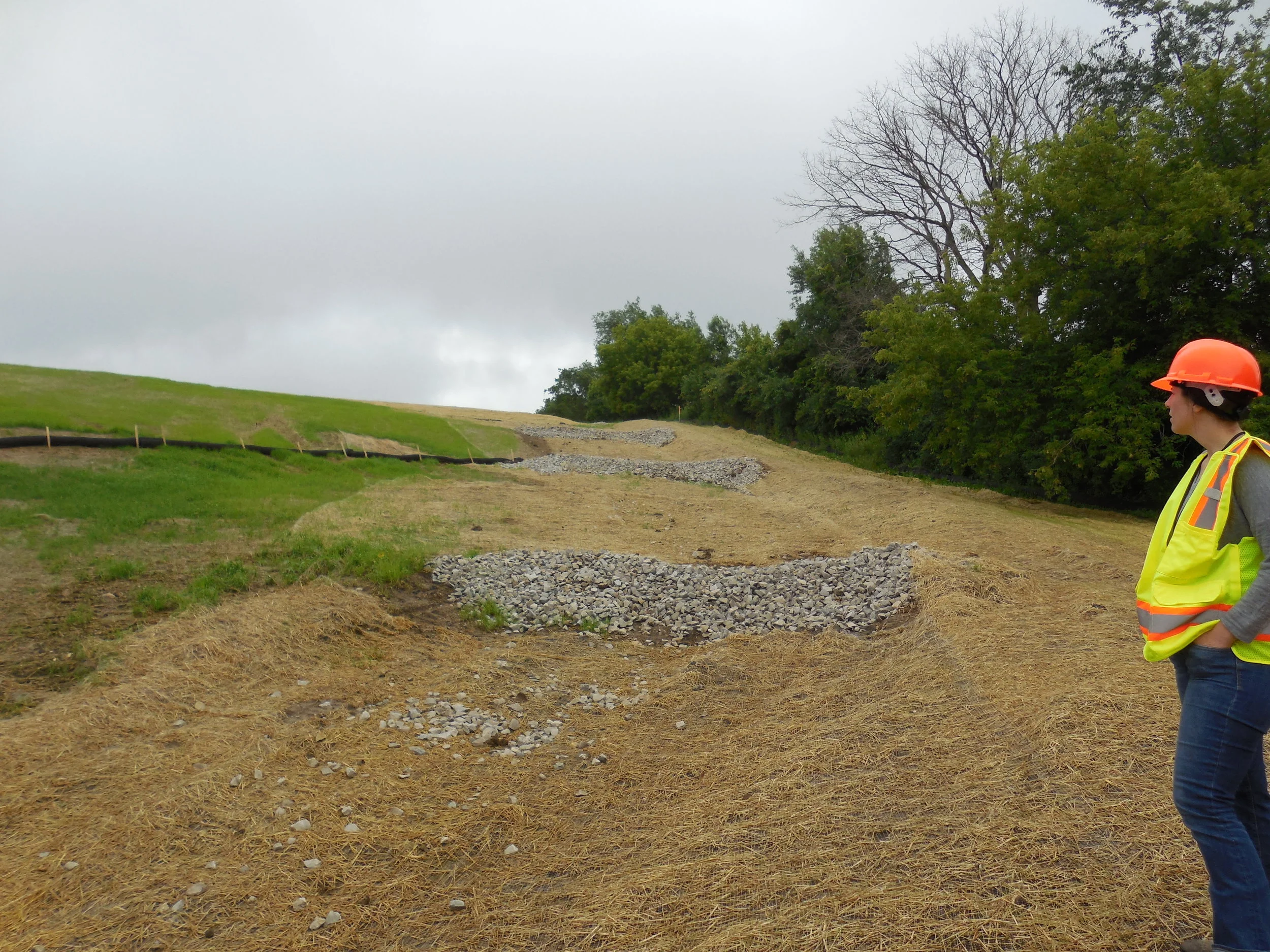Active construction sites continue to be a major source of pollution in our local lakes, streams, and wetlands. Just like training for a new skill or a new piece of equipment, training is needed to show construction site crews how, and when to install and maintain erosion control practices on construction sites.
As the temperatures fall and the leaves do too, the annual leaf collection programs start operating again. Whether it’s a community drop-off location for bagged leaves, municipally operated trucks, vacuums and sweepers to collect the piles along the road, or something in between, the public expects relatively clear roads and storm drains throughout the fall months.
Schoolyards present a unique opportunity for a transformation from grey to green infrastructure as many public schoolyards, especially in larger cities, are covered in asphalt. Green schoolyards can help to foster healthy urban watersheds and wildlife habitats, while improving the health and happiness of students.
Envision® is a rating system and best practice resource that was developed to help successfully implement sustainability into infrastructure projects. It can measure the sustainability of an infrastructure project from design through construction and maintenance for all types and sizes of civil infrastructure.
Urban Forestry Grants provided by the WDNR can help your community in planning for your upcoming tree projects. The DNR offers two grant applications to help your community establish or refine your forestry management practices.
Ruekert & Mielke, Inc. (R/M) provided the City of Sheboygan with electrical engineering services to layout and design an LED lighting system to serve their new SouthPointe Enterprise Campus. By going with an LED-based lighting system, the City will benefit through reduced energy consumption, lower maintenance, and longer-lasting fixtures.
There are many different definitions of “sustainability” these days. When referring to a sustainable community, the term often includes growth/development and municipal operations. The Public Works Department activities today have a large impact on how we will live and operate in our communities in the future.
As communities continue to look towards more sustainable infrastructure options, updating lighting systems is often a great place to start. Implementing an LED lighting system can mean not only a lower utility bill, but also a lower impact on the environment for your community.
Urbanization has led to a large increase in paved surface area. This has caused urban streams and rivers to swell to higher levels and to do so more frequently. With more water comes more erosion, making it increasingly important to properly maintain and protect urban stream and river banks.
Trees have always been a part of the beauty of our communities, but it can be difficult to put a value on the many other benefits they provide. The U.S. Forest Service has developed a software suite of tools to calculate those values, called i-Tree.
Urban trees are showing more promise from a storm water perspective than ever before. Trees absorb water from soil and transpire it to the atmosphere, reducing the amount of rainwater that flows untreated into storm sewers and ultimately to local lakes and rivers.
Snow plowing and applying road salt was the accepted norm from the mid-20th century until just a decade or so ago. More communities are now using new technologies and methods that are ultimately cheaper, better for the environment, and most importantly provide the level of safety the public expects during winter storm events.
Why do some streams have TMDLs while others don’t? When monitoring or sampling results over a designated period of time reveal problems with the physical, biological and/or chemical conditions of a stream, river or lake, a waterbody can be listed on a state’s Impaired Waters List.
The City of Oconomowoc, with assistance from R/M, constructed joint parking lots with vegetated parking lot islands to allow storm water to flow across the lot and into bioretention areas.
An emerging technology in the world of storm water management is floating treatment islands which are floating mats or rafts which provide a growing medium for wetland plants.
The City of New Berlin was faced with a difficult design challenge for a 7-block section of alley in the Buena Park neighborhood. The City wanted to take advantage of a Green Solutions grant from the Milwaukee Metropolitan Sewerage District (MMSD). The solution was a porous asphalt pavement to provide storm water storage, filtration, and conveyance.
As municipal governments continue to move towards green infrastructure, innovative uses of existing materials become increasingly important. Additionally, the need to effectively move and treat storm water runoff becomes increasingly important. Local municipalities are recognizing the importance of these two items.
In recent years, many states and local municipalities have made enormous strides in reducing carbon emissions and increasing the overall sustainability of their operations and infrastructure projects. Many sustainable construction methods, which often go unnoticed, are gaining popularity due to their lower cost and big environmental benefits.
The average American household uses 300 gallons of water per day at home. With summer fast approaching, the time for swimming pools and sprinkler systems is almost here. Warmer months can lead to significantly higher water usage, meaning that water conservation is increasingly important!
Rain gardens are typically depressed garden beds where rain accumulates and slowly soaks into the ground. By directing downspouts to rain gardens, we can reduce the amount of runoff that reaches the street, then the storm sewer, and ultimately erodes the banks of our local creeks and lakes.





















